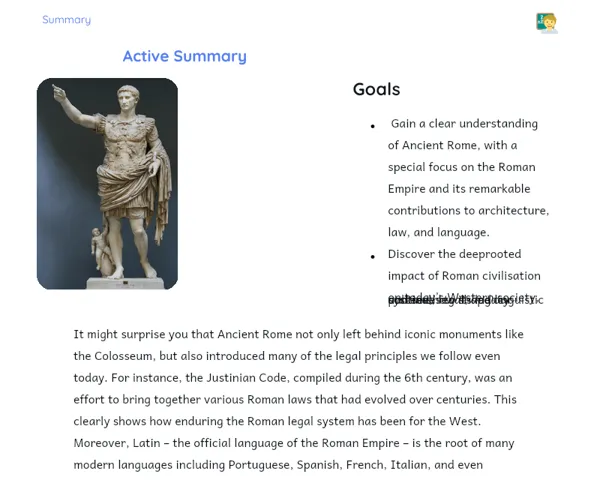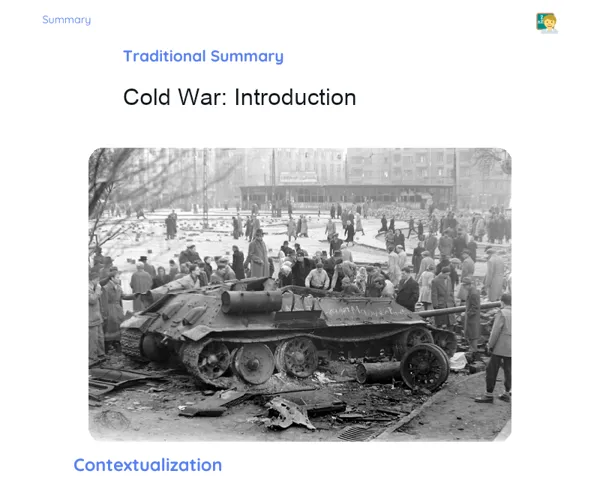Summary Tradisional | World War I
Contextualization
World War I, often referred to as the Great War, was a global conflict that lasted from 1914 to 1918. This war significantly altered the course of history in the 20th century, involving many of the world’s major powers grouped into two main alliances: the Allies and the Central Powers. While the assassination of Archduke Franz Ferdinand of Austria served as the immediate trigger, the underlying causes ran much deeper, including imperial rivalries, intensified nationalism, and a complex web of military alliances.
This war was marked by numerous brutal battles and the introduction of modern military technologies like tanks, aircraft, machine guns, and chemical weapons. Apart from its direct impact on the battlefield, the conflict brought about profound social, economic, and political changes. It led to the downfall of empires, redrawing of national boundaries, and a new global power structure that continues to influence the world even today.
To Remember!
Background of World War I
The outbreak of World War I was not due to a single incident but rather a culmination of several interrelated factors. One key reason was the alliance system. The Triple Alliance of Germany, Austria-Hungary, and Italy, and the Triple Entente of France, Russia, and the United Kingdom, created an atmosphere of suspicion and tension, where even a regional conflict had the potential to escalate into a full-scale war. In addition, growing nationalistic sentiments pushed nations to aggressively pursue territorial expansion and safeguard their national interests.
Imperialist rivalries also played a significant role. The European powers were engaged in constant competition for colonies and natural resources, which only fanned the flames of distrust and hostility. Although the assassination of Archduke Franz Ferdinand in 1914 provided the spark, it was really the build-up of alliances, nationalism, and imperial ambitions that set the stage for such a massive conflict.
While the killing of the archduke is often identified as the immediate cause, it is important to recognise that it merely sped up a process that was already in motion. The deeply interlinked alliances and clashing national interests ensured that once the conflict began, more nations were quickly drawn in following Austria-Hungary's declaration of war on Serbia.
Other contributing factors included the arms race and the increasing militarisation of European societies. All these circumstances together created an environment where war seemed unavoidable even before the tragic incident took place.
-
Alliance System: Triple Alliance and Triple Entente.
-
Heightened nationalism and imperialist rivalries.
-
Assassination of Archduke Franz Ferdinand as the triggering event.
Major Battles and Events
World War I is remembered for several major battles that not only influenced the trajectory of the war but also left lasting marks on military strategies. The 1916 Battle of Verdun, for example, was among the longest and most brutal battles, where the German aim was to wear down the French forces, resulting in heavy losses on both sides. Verdun later became a symbol of French resistance and a stark example of the harsh reality of trench warfare.
Similarly, the Battle of the Somme in 1916 involved large-scale combat between British and French forces against the Germans. Known for its staggering casualty figures, it is also remembered for the first use of tanks, signalling a shift in how battles would be fought henceforth.
Then there was the Battle of the Marne in 1914, vital in halting the German advance on Paris. This key victory for the Allies marked the start of trench warfare on the Western Front, highlighting the critical roles that mobility, logistics and the ability to rapidly reorganise played in modern military operations.
Each of these battles had unique features and consequences, but collectively they illustrate the immense scale and intensity of the conflict, as well as their impact on future military planning and strategy.
-
Battle of Verdun: French resilience and the harsh realities of trench warfare.
-
Battle of the Somme: introduction of tanks and extremely high casualty rates.
-
Battle of the Marne: key to stopping the German advance and a turning point towards trench warfare.
Technological Innovations
World War I was a significant period for technological experimentation and innovation in warfare. The British introduced tanks during the Battle of the Somme in 1916; although they were initially slow and unreliable, these machines rapidly evolved into a cornerstone of modern battle strategies.
Aircraft, which were originally used for simple reconnaissance, soon became integral parts of combat as they were armed and employed for both aerial dogfights and bombing raids. This era witnessed remarkable progress in military aviation, with newer, faster, and more powerful planes coming into service.
Machine guns, capable of firing hundreds of rounds per minute, changed the dynamics of the battlefield and made traditional frontal assaults extremely perilous, leading to the entrenched warfare that came to define the period.
There was also the large-scale use of chemical weapons such as mustard gas, which caused unspeakable suffering and mass casualties. Their indiscriminate nature eventually led to the establishment of new international protocols to control chemical warfare. In summary, these technological breakthroughs not only reshaped the conflict but also had enduring effects on future military operations and societal developments.
-
Tanks: their introduction and rapid development.
-
Aircraft: evolved from reconnaissance roles to active combat roles.
-
Machine guns: high firing rates that redefined the nature of trench warfare.
-
Chemical weapons: use of mustard gas and its long-term implications on warfare regulations.
Impact on Society
The effects of World War I on society were far-reaching. One notable change was the shifting role of women. With a large number of men enlisted for war, women stepped into roles that were traditionally reserved for men, including positions in the arms industry and other key sectors that supported the war effort. This marked the beginning of significant changes in gender roles which continued to progress after the war ended.
On the economic front, the war led to a massive redirection of national economies towards the war effort, spurring increased industrial production. However, these wartime economic measures meant that many countries later faced serious economic challenges and the need for extensive rebuilding.
The war also left many soldiers and civilians with deep psychological scars. Conditions like 'shell shock'—now known as war neurosis—affected many, prompting important developments in the understanding and treatment of psychological trauma. Additionally, the enormous loss of a generation had enduring effects on the demographic and social structures of the nations involved.
Overall, the war’s social, economic, and psychological impacts were extensive, altering practically every facet of life in the countries that participated.
-
Role of women: stepping into new work roles and changing traditional gender expectations.
-
War economy: shifting industrial focus and the aftermath of post-war economic challenges.
-
Psychological impact: the emergence of war neurosis and subsequent psychological support developments.
-
Loss of a generation: lasting demographic and societal effects.
Key Terms
-
World War I: Global conflict from 1914 to 1918 involving major world powers.
-
Triple Alliance: Military alliance between Germany, Austria-Hungary, and Italy.
-
Triple Entente: Military alliance between France, Russia, and the United Kingdom.
-
Nationalism: A deep sense of patriotism often leading to rivalry between nations.
-
Imperialist Rivalries: The competition among European powers for colonies and resources.
-
Assassination of Franz Ferdinand: The event that sparked off World War I.
-
Battle of Verdun: One of the longest and most devastating battles of World War I.
-
Battle of the Somme: A hugely bloody battle that also saw the first use of tanks in warfare.
-
Battle of the Marne: A pivotal battle that stopped the German advance towards Paris.
-
War Tanks: Armoured fighting vehicles introduced during World War I.
-
Aircraft: Initially used for scouting, later adapted for combat and bombing roles.
-
Machine Guns: Automatic firearms with rapid-fire capability that changed battle tactics.
-
Chemical Weapons: Dangerous poisonous gases used during the war.
-
War Economy: The transformation of national economies to support the war effort.
-
War Neurosis: Term used for the psychological trauma suffered by soldiers, historically known as 'shell shock'.
Important Conclusions
In summary, World War I was a multi-dimensional and intricate event with roots in long-standing alliances, rising nationalistic fervour, and imperialist ambitions. Although the assassination of Archduke Franz Ferdinand set the wheels in motion, the war was bound to happen because of the prevailing tensions of the time. Notable battles, such as those at Verdun, the Somme, and the Marne, not only steered the war’s course but also introduced new military tactics and technologies.
Technological advances—ranging from the use of tanks and aircraft to machine guns and chemical weapons—revolutionised warfare, leaving a legacy that affected both battle strategies and civilian life. Moreover, the repercussions of the war went well beyond the battlefield, reshaping economies and societal structures, and altering the roles of women and the overall demographic landscape.
Studying World War I is crucial for understanding the geopolitical and social changes that have shaped the modern world. It also serves as a constant reminder of the grave costs of conflict and the importance of finding peaceful solutions to international disputes. In our classes, a deeper exploration of this subject will certainly help students appreciate how historical events continue to influence current global relations.
Study Tips
-
Review your class notes along with the summary to reinforce the main ideas.
-
Watch documentaries and read different accounts of World War I for a wider perspective.
-
Participate in study groups or online discussions to share insights and learn from others.


